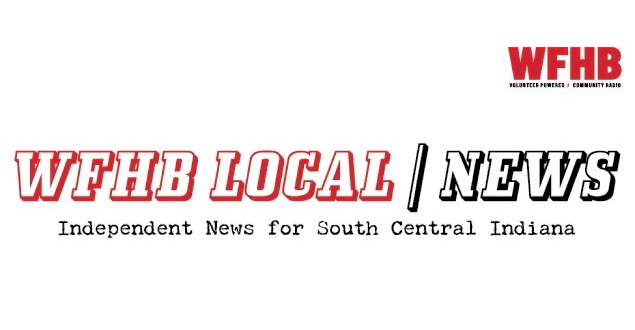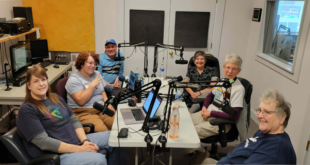Podcast: Play in new window | Download (Duration: 30:10 — 41.5MB)
Subscribe: RSS
This is the WFHB Local News for Monday, December 27th, 2021.
Over the next two weeks, we will take a look back at the stories we covered in the year 2021. In today’s episode, we will review local environmental stories from the last year.
You will hear Sophie Hall report on Duke Energy’s investment into solar, Brianna Devin provide a history of PCB contamination in Bloomington and Nathaniel Weinzapfel who covers how Senate Bill 389 will impact Indiana’s wetlands.
All that and more in Local Environmental Stories: 2021 In Review Part One:
A Bright Future for Energy in Indiana
Sophie Hall
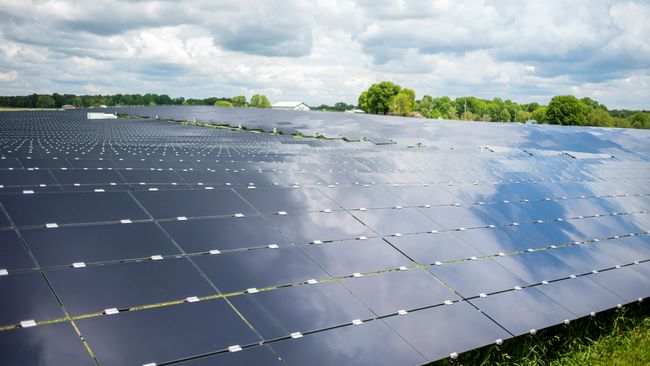
Betty Lynch starts her day like anyone else: she flips on the lights, makes coffee and breakfast, and watches the news. Some days she cuts the grass, or hops in her car to drive to work.
But Lynch doesn’t have to stop at the gas station on her way, or worry about her energy bill later. Her routine is powered by the solar panels on the roof of her home in Lawrence, Indiana.
“I’m doing my part to not put a bunch of carbon and ugly stuff in the air,” Lynch says.
Experts say conditions are right for a transition to solar and renewable energy in Indiana. A subsidiary of the Duke Energy Corporation, Duke Energy Renewables, has announced plans for the $180 million “Hoosier Jack” solar farm in Vigo and Sullivan counties.
The farm would exist on 1,500 acres of reclaimed surface coal mine. It would power 35,000 local residences and businesses, with no increase in Hoosiers’ bills.
According to Duke Energy Renewables Business Development Manager Tyler Coon, the Hoosier Jack farm is the most advanced of Duke Renewables’ Indiana solar projects.
“There’s a lot of ways that a project like this, just by being in that area, is going to benefit the local community,” Coon said.
He says the areas surrounding the farm could see a twenty-fold increase in property tax revenue, which would fund local schools and fire departments. The farm would also create 200 jobs for the two year construction period, and long term opportunities for local contractors.
“There’s more job growth in renewables than there are in coal, oil, and gas,” says Peter Schubert, Director of the Richard G. Lugar Center for Renewable Energy.
Schubert says he has seen a “quiet revolution” of solar energy in Indiana over the past decade, with a substantial fraction of generation in Indianapolis moving to solar. According to Schubert, much of the resistance to renewables comes from disinformation.
“There are some people, or groups, who are completely antithetical to renewable energy and will … use disinformation to convince people … that wind turbines are evil and solar panels are taking jobs away and causing cancer,” he said.
Still, the Environmental Resilience Institute’s Hoosier Life Survey shows that solar energy has become popular among the majority of Hoosiers, regardless of political affiliation.
“We think the conditions are certainly there for the state of Indiana to embrace pro-solar policies,” Zach Schalk, Indiana Program Director for Solar United Neighbors, said.
Solar United Neighbors is a nonprofit that promotes and facilitates customer owned solar, which allows people to power their homes with rooftop solar panels.
“It helps stimulate good paying local jobs, improve air and water quality and therefore community health, and it also helps build wealth in communities that have been negatively impacted by our legacy of dirty fossil fuel energy generation,” Schalk said.
According to Schalk, solar is the cheapest option at the utility scale. Low cost combined with changing customer preferences is causing many utilities to look into renewable energy.
But Schalk says despite the cost of solar panels decreasing 90% in the past decade, rooftop solar is still a big investment. He says Indiana needs proactive policies and community solar.
“If we do it right, everybody can benefit from the transformation to a clean, just, and equitable energy system,” Schalk said.
As far as what the future of energy in Indiana will look like, experts are divided.
Construction on the Hoosier Jack solar farm is planned for 2023, with generation beginning in 2024. Tyler Coon says that solar and wind energy will need to fill the void created by retiring coal plants in the coming decade, and he sees a large wave of solar companies coming to Indiana in the next five years.
Peter Schubert is currently studying the use of abandoned coal mines for grid-scale energy storage, which he says could meet Indiana’s manufacturing demands when combined with renewable energy.
Schalk envisions Indiana powered by community owned solar but is unsure of what the future will bring.
“These questions and problems feel really big.. and it’s really easy for people to feel small and insignificant,” Schalk said, “But… I think the biggest thing to take away for folks who are interested in these questions is to get involved…and be a part of the solution.”
Betty Lynch doesn’t start her day like everyone else, because her life runs on solar. She is one of many Hoosiers looking toward the future, and hoping to see clean, green energy there.
So while her morning isn’t typical now, she hopes it will be soon.
Environmental Activism in Bloomington: The History of PCB Contamination
Brianna Devin
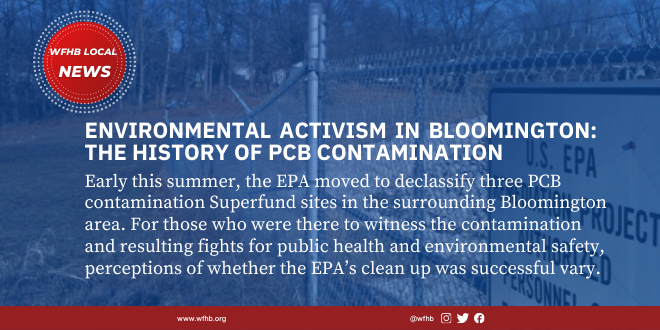
Early this summer, the U.S. Environmental Protection Agency moved to declassify three PCB contamination Superfund sites in the surrounding Bloomington area.
The decommission of these clean up sites from the National Priority List draws a decades long local environmental movement to a close. For those who were there to witness the contamination and resulting fights for public health and environmental safety, perceptions of whether the EPA’s clean up was successful vary.
Yet there seems to be a consensus – that this story of community activists rallying in the wake of environmental catastrophe has earned Bloomington a spot in the history books.
Journalist and Professor Steven Higgs has been following the story of PCB contamination in Southern Indiana every step of the way, starting all the way back with the initial contamination.
“In terms of contamination from one source, Westinghouse, this is the biggest in the entire United States,” said Higgs.
In the wake of the mass contamination of such a toxic substance, public officials at all levels of government began the urgent search for a clean up solution. The EPA came out with a proposal to address the contamination along with another common local environmental issue.
“The mayor’s office along with the state of Indiana, the EPA, their solution was to build an incinerator,” he said, “that was going to burn the PCBs at 2000 degrees, and they were going to fuel it with trash.”
The idea to use solid waste as fuel to burn PCBs in an incinerator may sound innovative in theory, but in practice issues quickly begin to arise. One problem being that trash would be an extremely inefficient resource. Common solid wastes are made up of materials that would likely not be able to heat the PCBs to intense heat necessary for their destruction.
Another issue presented by the incinerator solution had community members band together in order to halt the clean up process:
“Because of the potential health risks that were going to come from the PCB incinerator,” said Higgs, “people in this community rose up and fought it tooth and nail.”
Community member Linda Greene, a member of People Against the Incinerator, was one such activist. Greene explains the difficult road those opposed to the incinerator faced.
“It was a very difficult and exhausting process, because we were up against everybody,” she said. “We just made a fuss constantly.”
Ultimately, their civic engagement and environmental activism was successful, and the incinerator plan was discarded. Professor Higgs explains that though many public officials were sure the incinerator was a safe solution, public outrage at the prospect of further toxic pollution won out.
“They never backed down from the fact that it was a good idea, but politically, it just became untenable, because when you burn 650,000 cubic yards of contaminated materials, you get 650,000 cubic yards of ash. And that had to go someplace,” said Higgs.
After the hard fought battle against the incinerator, the EPA still had to come up with a solution to the PCB problem. A local consent decree laid out the plan to capture and remove PBC from the Southern Indiana environment and take the toxic materials elsewhere for treatment.
Now, after decades of the capture and removal process, the EPA’s move to declassify the superfund sites signals a successful clean up.
However, some community members are still skeptical. With health concerns at the core of toxic contamination and years of fighting for a safe clean up, Linda Greene points out that people may be wary of believing the EPA’s claims.
“I think there’s a tremendous amount of corruption at all levels. I think the official story is making it look like it’s all taken care of. I think there’s still a problem here,” said Greene.
However, Thomas Alcamo, the EPA’s Remedial Project Manager for the Bloomington sites,
reassures that the clean up process has been rigorous and there will be routine check ups from the federal government and their contractors, as is standard practice in the declassification process.
Higgs concurs with this opinion that the EPA has done all that can be done.
“It’s probably been as effective as it could be, but it’s just so omnipresent,” he said. “Every human being, you have PCBs in your body. There’s not a person on the planet, I don’t believe, who doesn’t have PCBs and honestly a couple hundred other toxic chemicals.”
Specific contamination sites are likely no longer a hazard here, thanks to the EPA Superfund cleanup process and the relentless work of community members.
However, the now widespread reach of PCBs alludes to a greater problem on the horizon – environmental threats, contamination-based or otherwise – are likely to escalate as climate change looms and pollution continues to rampage.
The story of PCBs in the Bloomington area creates a movement to emulate and one that highlights the importance of community action and protection at the local level. Let’s not forget this story of civil engagement in the face of environmental disaster.
Senate Bill 389: The Modification of Wetlands & Its Impacts
Nathaniel Weinzapfel
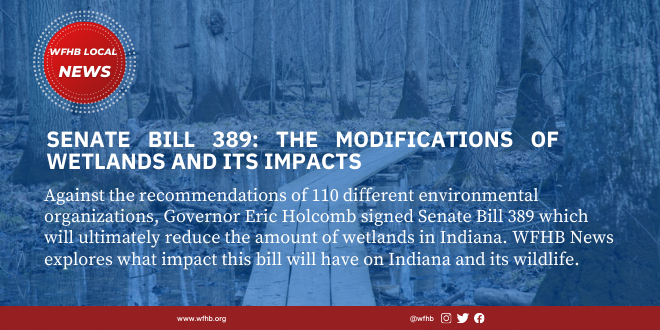
The opposition was strong. Over 110 organizations and individuals signed and delivered a letter to the Governor’s office requesting a veto. The signers represented all parts of Indiana and multiple forms of environmental organizations. However, despite the unprecedented amount of opposition, on April 29th, Governor Eric Holcomb signed Senate Bill 389, which reduces the amount of wetlands in the state of Indiana.
Meanwhile, in a quiet part of Monroe County lies the peaceful wetlands at Beanblossom Bottoms Nature Preserve. Unaffected by the changes in the senate bill, the wetlands found here will continue to fulfill its environmental purpose for generations. However, Executive Director John Lawrence is a strong supporter of all wetlands and emphasizes the importance that wetlands have for the state of Indiana.
“Wetlands are just incredibly important reservoirs of biodiversity and they also provide really important ecosystem functions. Flood control is a big one. They act like a big sponge and soak up water and hold back water and help mitigate flooding. They also reduce pollution in waterways by collecting pollutants which can, you know, include excess nutrients. Wetlands help retain the nutrients locally so that they don’t go downstream. They are also just really important habitats for plants and wildlife. The example at Beanblossom Bottoms Nature Preserve we have recorded over a dozen species that are endangered or of conservation concern there, including the Indiana Bat, which is federally endangered, the Kirkland snake, which is a cute little snake that uses crawfish burrows and it has stayed endangered and several other things. A lot of these plants and animals rely on the wetland habitat and are not found anywhere else,” said Lawrence.
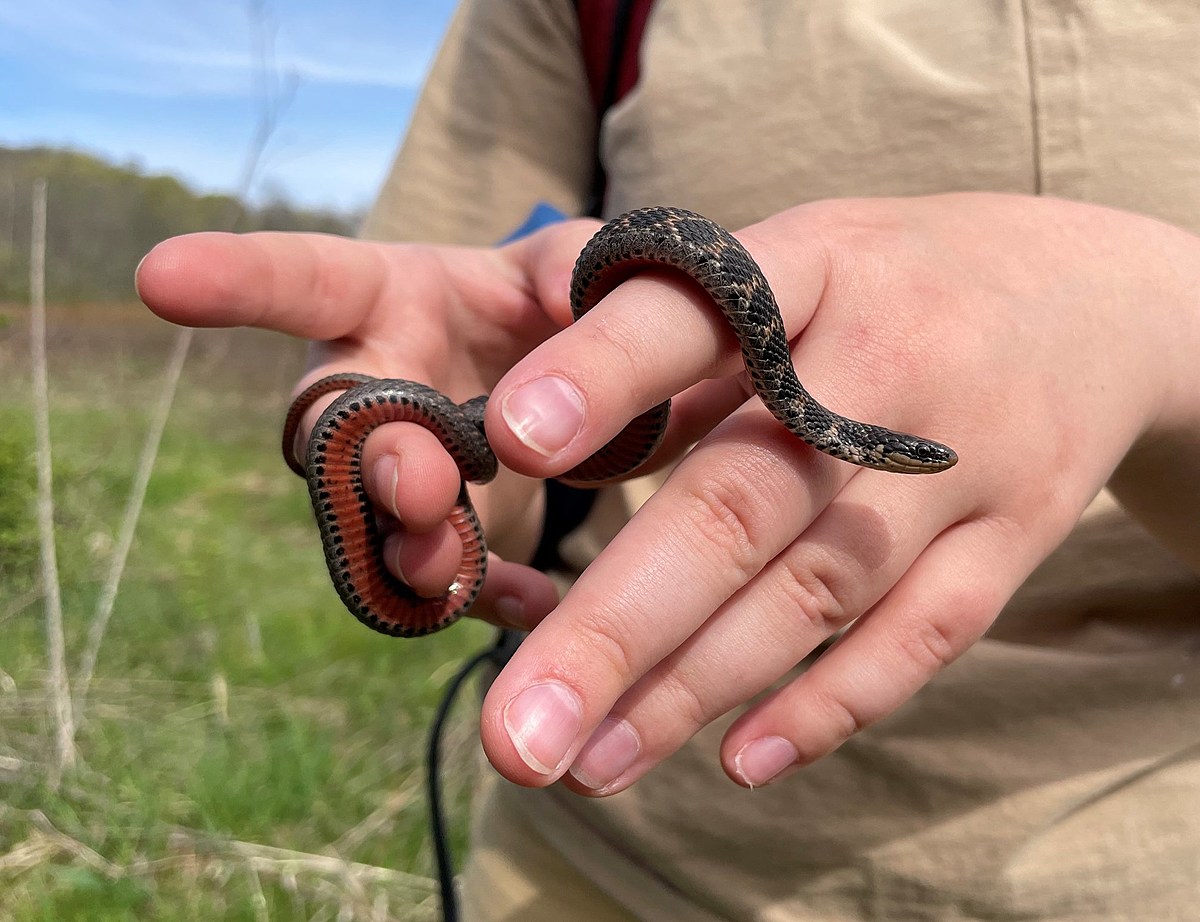
If the Beanblossom Bottoms Nature Preserve is protected then what exactly will the controversial bill the governor signed do? The bill deals with the wetlands of Indiana that are protected by state laws. Of the wetlands in Indiana, 80-90% are not protected by the federal government but have been protected at the state level. Under state protection, there are three classes of wetlands. The bill removes Class I wetlands from state protection, and also reduces the amount of Class II wetlands, while leaving Class III wetlands intact. The differences between the three classes were explained to me by Christopher Craft, a professor of rural land policy at Indiana University Bloomington.
“So again, this is back to the state of Indiana that isolated wetlands bill. They say it’s a Class 1, the lowest quality if there’s been, hydrologic alteration, like it’s been ditched or drained or filled or if it has more than 50% invasive species. So if it meets one or both of those criteria, they say it’s a class one and under the old bills, a lot of these wetlands were protected. If they are larger than a half an acre, they would be protected. You know, the Senate Bill 389 has said we’re doing away with Class1 where we’re not gonna, these are not wetlands under this bill. And if you have Class 1, isolated wetlands on your property, then you can do what you want with them. Well, let’s go to Class 3 wetlands. They’re the highest quality. They’re ones that and I think under the existing 389 bill these aren’t being affected. Um, they were protected before, and they’re protected now. They have high quality or they have high species richness, or they have rare endangered species. There aren’t that many of those you know. There’s a lot more Class 1 wetlands, and then Class 2 are kind of in the middle. They’re not, you know, severely altered or dominated by invasive species, but they’re not these super high quality sites and Senate Bill 389 affected Class 2 wetlands by saying that it used to be that I think it was more than a quarter acre in size. It would be protected. And I think under Senate Bill under 389 has said, Nah, it’s got to be bigger. It’s more than 3/8 of an acre, we’ll protect it. But if it’s less than that, it’s not going to be protected,” said Craft.
According to the National Water Summary Wetlands Resources Report, wetlands cover over 813,000 acres of Indiana and 80% of the state’s remaining wetlands fall under the categories of Class I and Class II and are now susceptible to being drained. With this information in mind and knowing the importance of wetlands, Professor Craft explained who benefits from the passing of this bill and who benefits from the change to the permits needed to remove wetlands.
“Well, I think for people who advocate growth and um, that sort of economic growth. I think that this is an argument that they would like because it’s, you know, some of this land is off the table for development or if you do want to develop it, you’re going to have to go through the permitting process. And that can be pretty lengthy and pretty rigorous. I’ve worked with, some landowners who have kind of gotten caught up in, in that, you know, that people, I think who stand to benefit, on the other hand, Indiana is not known for having, you know, the abundant natural resources, some states like Michigan have, and so when you take some of these protections away, you take away some of the limited natural resources that are still present in the state,” explained Craft.
For many farmers and land developers, the permitting process for removing wetlands is quite difficult, and the bill relaxes this process and makes it easier for Class I and some Class II wetlands to be removed. While this allows development to be easier at the moment, it does not account for the effects that the lack of wetlands could have on the future.
Opponents of the bill, including the Indiana Department of Natural Resources, have argued that the bill leaves Indiana ill-prepared to face the floods that will follow the increases in rainfall expected in future years, as well as limit essential earth processes such as water filtration, water storage, and groundwater replenishment.
Despite the passing of this bill, there is still great work being done to protect the wetlands of Indiana and restore old wetlands throughout the state. Mr. Lawrence described what effect the bill will have on the goals of the Beanblossom Nature Preserve and its organizing body, the Sycamore Land Trust.
“It certainly just means that efforts by conservation groups like Sycamore, the Nature Conservancy, our other local land trusts throughout the state to do what we can to acquire wetlands and areas that can be restored the wetlands and then put in the so large commitment of time and effort to number one, do any restoration work that’s needed and then, of course, to monitor and maintain and protect that area in perpetuity. That work just becomes all the more important when there are less efforts on the regulatory side to protect wetlands,” said Lawrence.
Lawrence says for those interested in helping conservation groups who are stepping up to the plate to protect Indiana wetlands, the Beanblossom Bottoms Nature Preserve always welcomes volunteers.
“There are a lot of ways you can support our work. The most basic is to be a donor. We have memberships starting at $40 dollars a year and it all goes into making our work possible of not only acquiring more land but also protecting and maintaining the land that is already in our care. We also have volunteer events and the best way people can get involved with that is to sign up for e-newsletter at our website at sycamorelandtrust.org,” he said.
Credits:
You’ve been listening to the WFHB Local News,
Today’s features were produced by Sophie Hall, Brianna Devin and Nathaniel Weinzapfel.
Our theme music is provided by Mark Bingham and the Social Climbers.
Engineer and Executive producer is Kade Young.
Anchors are Benedict Jones and Noelle Herhusky-Schneider.
 WFHB Bloomington Community Radio
WFHB Bloomington Community Radio
